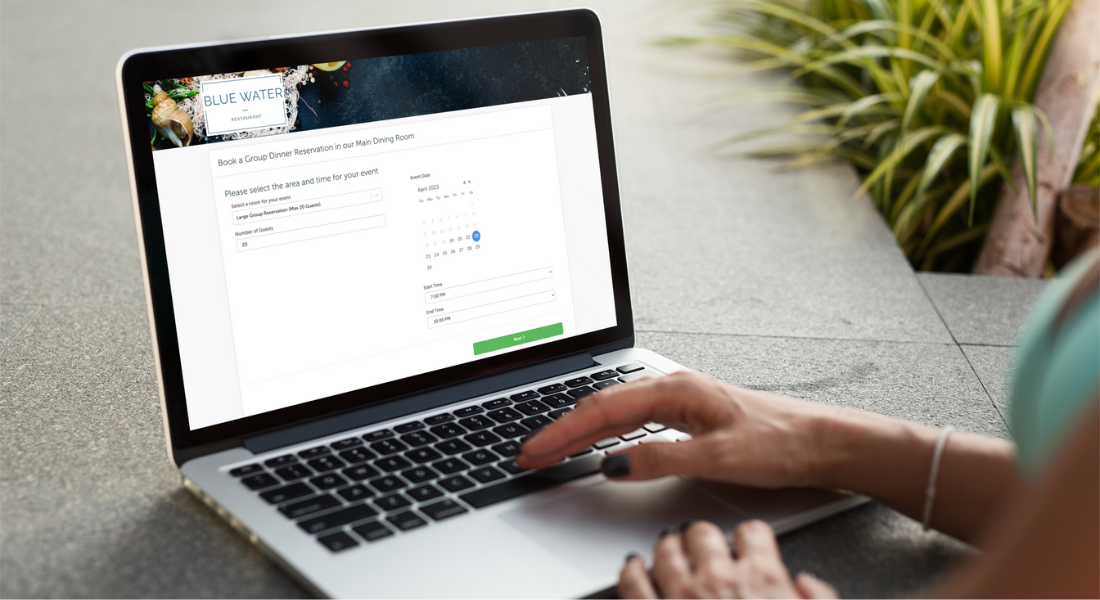Best Practices for a Self-Service Strategy in Hospitality

Today’s technology has advanced self-service in hospitality. There are many customer-focused features to process secure, instant payments, reserve or book tables and spaces, order menu items, facilitate continuous customer communication, enroll in loyalty programs, and more. Not to mention that self-service drives revenue and reduces restaurant labor workload.
As a restaurant or venue, you may already use self-service technologies for some customer transactions and interactions. But because technology is an integral part of today’s culture and our customers’ expectations have shifted to a self-service model, your business strategy needs to continue evolving. Want to know some key ways to provide self-service in a seamless digital experience? Here’s what you need to do to successfully implement customer-empowered interactions in the hospitality space.

1. Set clear goals for self-service
When it comes to thinking about establishing self-service, especially in hospitality, you want to set some goals for both your business and your customer including:
- Add customer convenience
- Improve team efficiency
- Increase accuracy and drive revenue
Add customer convenience
First and foremost, you should consider enhancing convenience for your customers, no matter the transaction or interaction. Today’s hospitality guests demand instant service, personalization, and organization.
Through self-service technology, you can implement so much functionality. Customers can instantly reserve tables or private or semi-private dining spaces, or unique venue experiences. Customers can order menu items tableside, via kiosk, or through your website or app. They can customize their orders, review menus at their own pace, effortlessly place orders, and submit payments. Loyalty programs and customer communication is also facilitated wonderfully through self-service portals. Providing all this convenience for your customers, you’ll extend wonderful hospitality and create more loyalty.
Improve team efficiency
Another top goal in providing self-service is to increase your team’s efficiency and ultimately reduce labor workload. Self-service, AI, and automation remove a lot of burden on your business and provides cost savings. By providing convenience to your guests, you also remove a lot of manual tasks your team had previously handled. This provides more accurate service and more time for your staff to do other, more meaningful tasks.
Increase accuracy and drive revenue
In addition to convenience and efficiency goals, a successful self-service model should improve accuracy and increase revenue. The overall success of your business will depend on these objectives, so they are just another illustration of why you need to implement self-service strategies.
2. Define your customer journey
Being customer-centric is a fundamental principle in the hospitality industry. When establishing a successful self-service strategy, put yourselves in the shoes of your customers! Conceptualize every customer scenario and determine which use cases would benefit most from self-service.
Make certain you define both your customers’ needs and their potential pain points. Ultimately, the technology you implement should easily fulfill necessary transactions and interactions and remove any obstacles. Your self-service tech should integrate into the customer experience (CX) and direct your customers intuitively and easily to complete a transaction or, if need be, communicate with your team.

3. Find opportunities for labor efficiency
Implementing self-service technologies also benefits your operations, so as you roll out your strategy, keep your labor workload in mind. Take a look at customer interactions and the impact they have on your team.
Streamlining routine processes like reservations, bookings, and ordering can optimize your staff resources and improve cost efficiency. Additionally, self-service solutions often integrate with other restaurant and hospitality software, simplifying data management, Customer Relationship Management (CRM), reporting, and analysis. You’ll be strategically positioned to provide tailored suggestions for your customers, develop stronger customer relationships, and build loyalty. Remember that a self-service strategy doesn’t mean you are removing the human touch completely, but rather you are using tech to reduce some of the work to leave more room for rapport building.
4. Choose the right self-service technology
Once you decide what parts of the customer journey you’d like to impact and what tasks of your operations you’d like to reduce, you can investigate the right solution.
There are many hospitality tech options today, including physical hardware placed at your physical location and software or SaaS (Software as a Service) technologies that are easily integrated into your website, social profiles, apps, and more. On the most basic level, technology or AI-based self-service platforms can focus on the most common, repeatable scenarios and issues. You’ll want to consider these attributes when evaluating the right self-service technology:
- Hospitality focus
- Implementation
- Ease of use
- Support
- Pricing
- Testimonials
- Integrations

5. Measure success of self-service
Once implemented, your self-service interactions and transactions should be monitored and measured. Clear metrics and (Key Performance Indicators) KPIs should be used to determine whether the organization is achieving defined goals and whether the strategy is meeting the customers’ needs. Here are some data points that are advisable to keep track of:
- Customer speed and convenience
- Accuracy
- Labor efficiency
- Cost of service
- Revenue
- Customer data
- Transactional feedback
Deliver self service with direct booking
Self-service has become a game-changer in providing hospitality, from enabling guests to take control of their experiences to enhancing operational efficiency. This is why we created Tripleseat and our direct booking feature, TripleseatDirect.
Your customers can easily book large group reservations directly on your website, social media, and more. Create custom direct booking forms to leverage business and streamline the group dining experience. Self-service technologies will remain a vital component of the modern hospitality experience. Want to learn more about how TripleseatDirect can help? Schedule a Tripleseat demo to take a closer look at our event management features.
